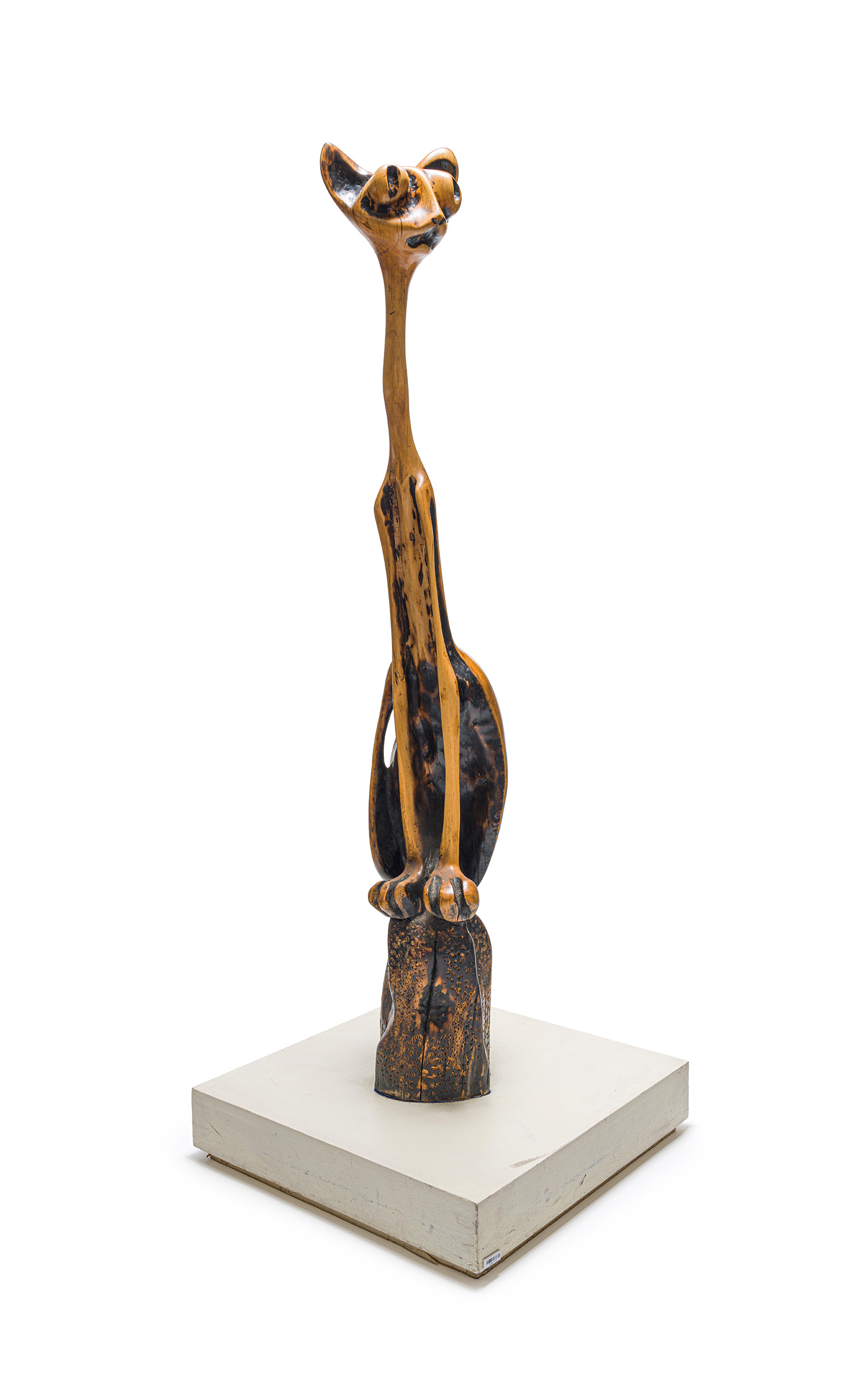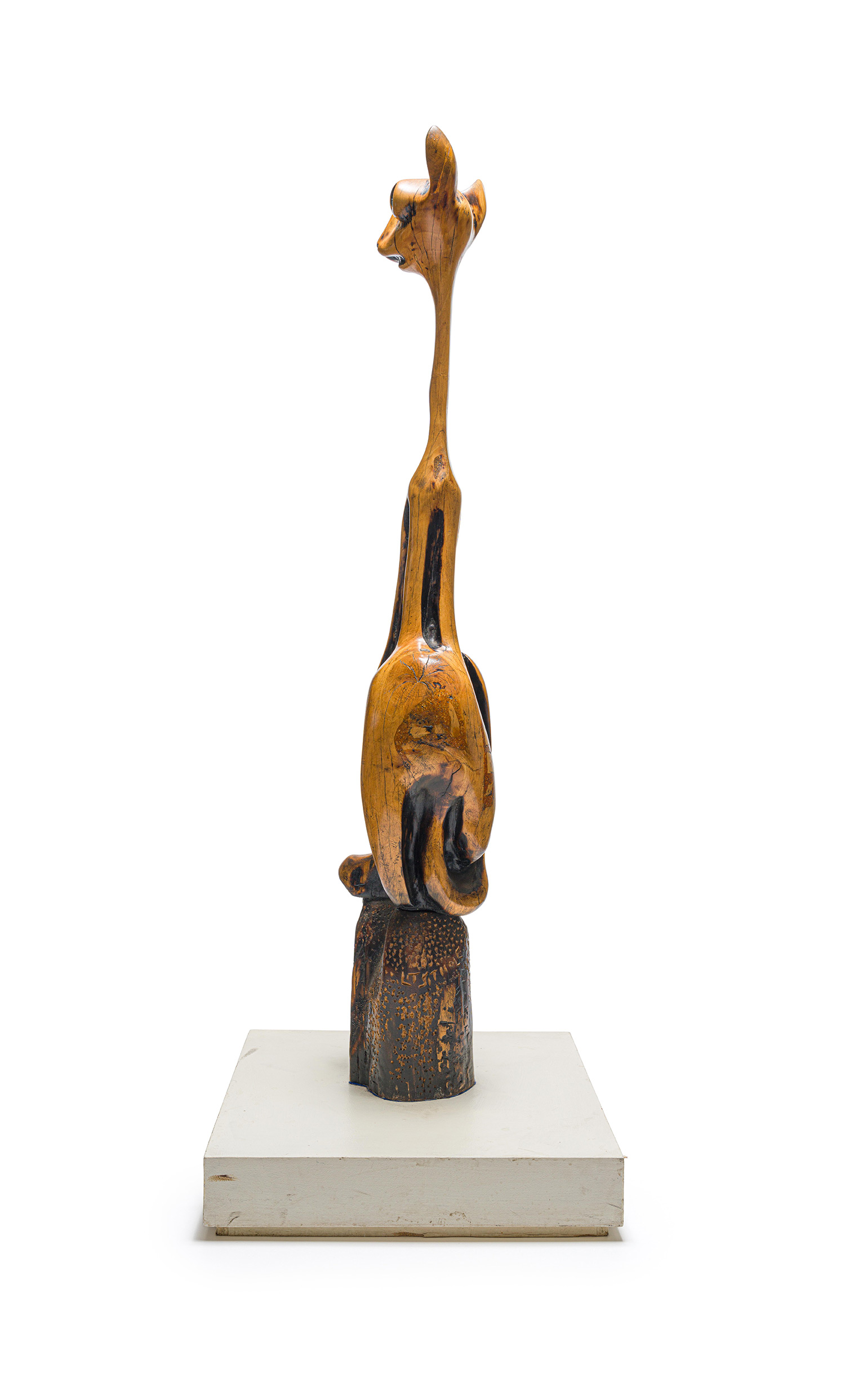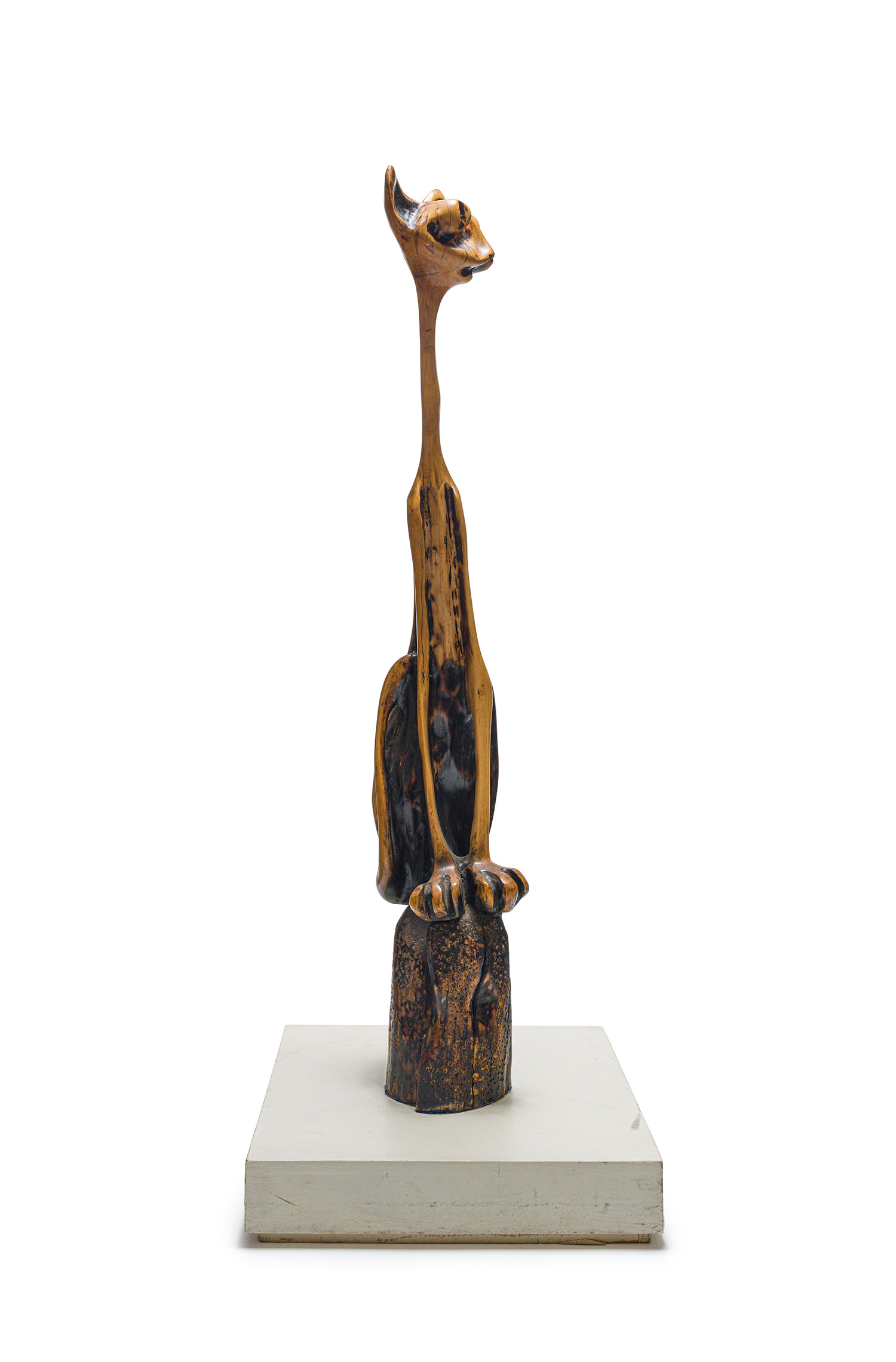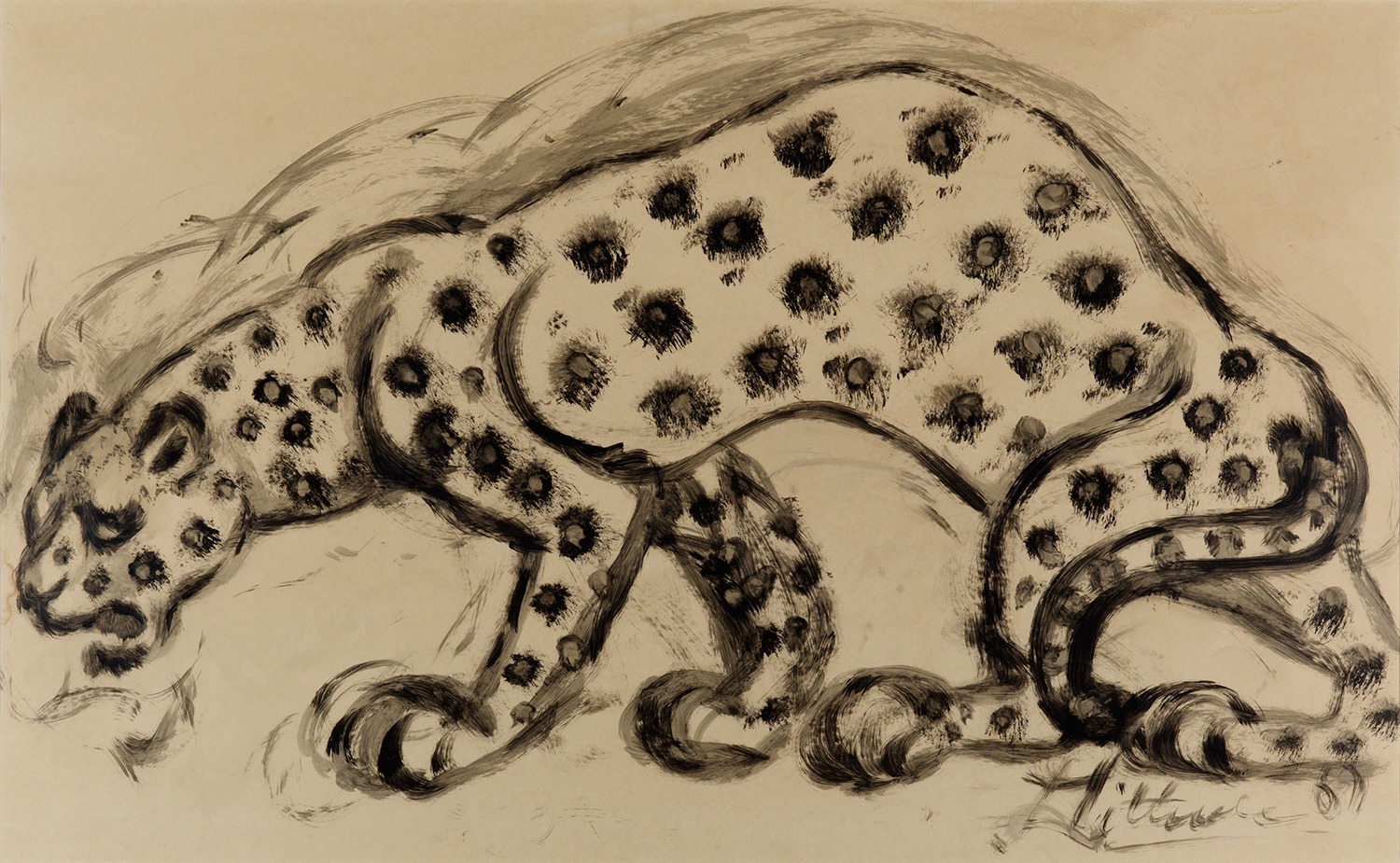Lucas Thandokwazi Sithole (1931 – 1994)
BIOGRAPHY
Lucas Thandokwazi Sithole was one of South Africa’s foremost modernist sculptors, who received international recognition within his lifetime. Born in KwaThema, Springs, Sithole was first introduced to sculpture by his grandmother, a well-known potter, who encouraged him to model clay when he was a young boy living in the Transvaal (now Gauteng).
Sithole later enrolled at the Vlakfontein Technical College, where he had hoped to study art, but because there was no art teacher at the school, instead trained in carpentry and cabinet making, which equipped him with exceptional skill in working with wood and metal.
Sithole trained at the Polly Street Art Centre under the guidance of Cecil Skotnes with whom he formed a close bond. According to Skotnes, Sithole was greatly influenced by the attenuated proportions of Sydney Kumalo’s sculpture Praying Woman (1959).
Sithole’s sculptures were typically carved from wood or stone, or cast in bronze. He favoured indigenous woods, which he sourced himself from the wild. In the production of his work, he paid great respect to his medium, allowing the wood or the stone to suggest a form.
Sithole received significant recognition in both his home country and abroad. In 1962, he exhibited alongside the Gerard Sekoto and Louis Maqhubela at Adler-Fielding Gallery, Johannesburg, and, in 1968, he participated in the Venice Biennale, where he was awarded the prestigious prize for sculpture. In 2024, his sculpture The Guitarist (1988) was chosen as part of Adriano Pedrosa’s ‘Foreigners Everywhere’ in the 60th International Art Exhibition at Venice.
Sithole’s sculpture was posthumously included in The Short Century (2001 – 2002), curated by Okwui Enwezor. The exhibition travelled between Germany and the US, including to MOMA, New York.
Sithole’s work is held in collections across the world, from the Iziko South African National Gallery, Cape Town, to the Museum fur Volkerkünde, Frankfurt, Germany.





